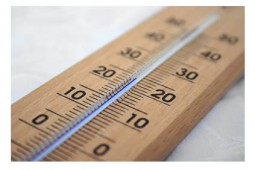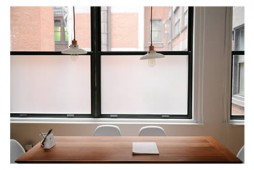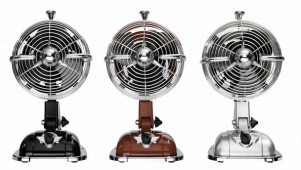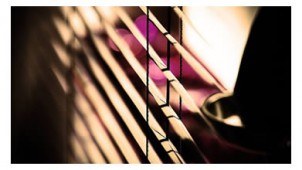Record highs in temperature of up to 40 degrees Celsius can quickly cause buildings to become muggy and warm if no appropriate countermeasures are taken. Apart from investing into technical equipment there are also a lot of tips for the household.
Contents
- Ventilating correctly during elevated temperature and humidity
- Correctly djusting the air conditioner system
- Systematic use of fans
- Protection from the sun
- Helpful tipps
Building designs, insulations and building techniques nowadays may provide a pleasant climate under many circumstances, however staying in there for a longer time sometimes feels like a trip to the sauna anyway. After all, factors like humans, appliances, sunlight and humidity play an important role. We will show how to keep the house cool, even during long periods of heat.
Ventilating correctly during elevated temperature and humidity

Inside the house or apartment indoor air is heated and mosturised through many of our activities. Amongst those count cooking and preparing food, body hygiene and body odours, plants and doing the laundry. Four people in one household can release up to 10 litres of water as indoor air. If there are any colder corners in the house, this is guaranteed to lead to mould growth.
50 percent humidity means that air has absorbed half of the maximum amount of water vapour that is possible. The value 100 percent signifies that the air has been completely saturated with water vapour. If more moisture is added on top, condensation becomes noticeable on walls and windows. This can already happen if apartments or rooms are insulated poorly or if there are different temperatures.
The ideal value for humidity is 40 to 60 percent with 20 to 23 degrees Celsius.

Particularly in summer it is important to air rooms correctly, because during summer months humidity levels in the air are elevated. That is why at least 25 to 30 minutes should be spent on ventilating, so that a complete exchange of the used air is possible. The elevated temperature and humidity prevent a fast process of exchange like it would be the case in winter.
As summer heat can accumulate to great extents, it is recommended to only ventilate in the early morning and late evening hours or to leave open the window during night if cooling has been announced in the weather forecast. That way cool air can be stored on the inside and does not heat up together with the outdoor air. Opening all doors and windows at the same time helps in the mornings and evenings to create ventilation that further cools down the home.
Homeowners should never air out the cold cellar during summer under high temperatures, because the warm outdoor air condenses on the cold cellar walls and creates a breeding ground for mould.
Correctly djusting the air conditioner system
If you have acquired an air conditioning system for your office or home, you enjoy cool indoor air. However, caution is advised, incorrect settings of the system can be harmful for both the home and its residents.
Basically, an air conditioner system works like a refrigerator, with a coolant inside the circulation in a closed cycle. The heat of the room is absorbed and released to the outside.
Particularly inside offices, apartments and rooms located underneath the roof or with large window fronts air can heat up severly. An air conditioning systems with correct settings ensures a steady, pleasant temperature.
It is recommended to set the system to keep the indoor temperature at most six degrees Celsius under the current outdoor temperature. The temperature that provides an ideal comfort level for most people is between 20 and 25 degrees Celsius, however if the outdoor temperature is lower than 30 degrees, some people might already start to feel cold if the indoor temperature falls below 25 degrees. The cold draught can also lead to muscle tension, if it is adjusted too cool.

There are, however, two different factors that you should pay attention to when acquiring an air conditioning system. On one hand costs for the installation of the system are very expensive, on the other hand running the system can consume a lot of power. If you are implementing a an air conditioner later on, you will need to drill holes in the walls for the ducts transporting exhaust air, installation on the inside of the house is also not always easy. Depending on the room size, costs for purchase and installation range from 800,00 to 10.000,00 Euro and more per year. When utilised often, additional costs for electricity can rise from 100,00 to 300,00 Euro and more per room each year. In most cases, the system only manages to cool down rooms with a maximum of 20 square metres. The pipe for exhaust air also needs to transport warm air to the outside non-stop, and, if not permanently installed in a fixed place, requires an open window which in turn has a negative effect on the efficiency.
On top of that, the eco-balance of those devices is negative, because the additional power consumptions lead to an increase of CO2 emmissions. Usually, only expensive high-end systems operate quietly, cheaper alternatives can generate a generous background noise.
Systematic use of fans
Many people are tied to the office or their workplace during daytime and not everywhere air conditioning systems or cellar rooms are provided. Fans are a possibility to provide cooling and create a pleasant indoor climate. There are many different models and sizes that can be applied depending on type of the room and personal preference. Most fans consume only 25 Watt power on their highest speed, on the lowest this number is as low as 3 Watt. They cool down the body by a breeze brushing over the skin, facilitate transpiration and evaporative cooling.
There are already energy-efficient ceiling fans, take a look at them here.
Portable fans are designed to provide a fresh breeze in summer with high rotation speeds. They can be divided into desk fans, floor fans, tower and pedestal fans.
Floor fans require a bigger amount of power, wind machines can even create up to 5000 cubic metres air flow per hour.
Tower and pedestal fans should be positioned in such a way in the room that residents are exposed to direct cooling only for a short time. Ideally the devices are set up 180 to 200 centimetres away. More tips in our guide.

These fans should be chosen according to room size and room height, the smaller the diameter and the bigger the blade pitch, the more air can be moved.
More calculations and information about the room size is available here.
Protection from the sun
Before a room is even able to heat up, certain precautions should be taken if hot weather is expected during the day, so that the heat cannot get inside in the first place. Roller blinds or curtains generally help by darkening the room.
Blinds protecting from heat are particularly efficient on roof-lights, due to their properties they reflect glistening sunlight and thereby deflect heat from the outside. High-quality models contain aluminium coatings that reflect heat and cold, and are therefore applicable in summer and winter. Nacre coatings mostly help against heat, their surface deflects warmth.

Incidentally, sun protection is more effective on the outside than on the inside, which is why roller blinds are more efficient than indoor window covers.
If you are looking for a long-term solution, you can equip office and home with UV protective windows that can prevent as much as 80 percent of the sun’s energy from entering and still allow sufficient visibility.
Their design is based on silver coatings and includes an interior pane, a special glass filling in the space between the glass panes, a sun protectant and, finally, an outer glass pane. These glasses can prevent heating up by up to five degrees Celsius. An alternative to the costly installation of those windows is a UV protective film that can be stuck onto each window.
Helpful tipps
Apart from larger spendings there are also many household tips and tricks that ensure a cool home. For once, all electric appliances that are not necessarily required should be turned off. Computers, TVs, hair dryers, dish washers and Co. release a lot of warmth that further heats up the room. A tumble dryer for example is not required any more with a temperature of 20 degrees and more if the garden, balcony or patio provides enough space for air-drying. Residents should turn off devices in Standby mode completely, it keeps development of heat and costs low.
If you are not able or willing to go without the computer in summer, you should pay attention to its specifications regarding ventilation and cooling. Big fans with high rotation speeds and fins made of pure copper for letting out the heat are important. Graphics cards and processors are the main cause for heat development and should also receive corresponding ventilation. In some cases they can even be upgraded later on.
A popular trick for a more pleasant indoor climate is to hang up moistened cotton cloths or bed sheets in front of the window or inside the room. The drying process absorbs heat from the air and creates evaporative cooling. If you are using a fan additionally, you also receive a welcome air circulation. However in this case you should pay attention to ideal humidity levels, additional humidity can put a strain on the indoor climate and the residents. Another alternative to this method are fans with water sprayers, which humidify dry indoor air and create evaporative cooling. AIROS Cool has an integrated air moistening system with a 1.8 litres water tank which generates humid air in summer and winter both.
Cold walls and floors are perfect for keeping the room chilled. Big and heavy carpets are rarely needed during summer and hold onto a huge amount of heat.
Banner image: pixabay.com © stux (CC0 1.0)
Image 1: Pixabay.com © PublicDomainPictures (CC0 1.0)
Image 2: Pixabay.com © Unsplash (CC0 1.0)
Image 3: © creoven.de
Image 4: Pixabay.com © yeniguel (CC0 1.0)





